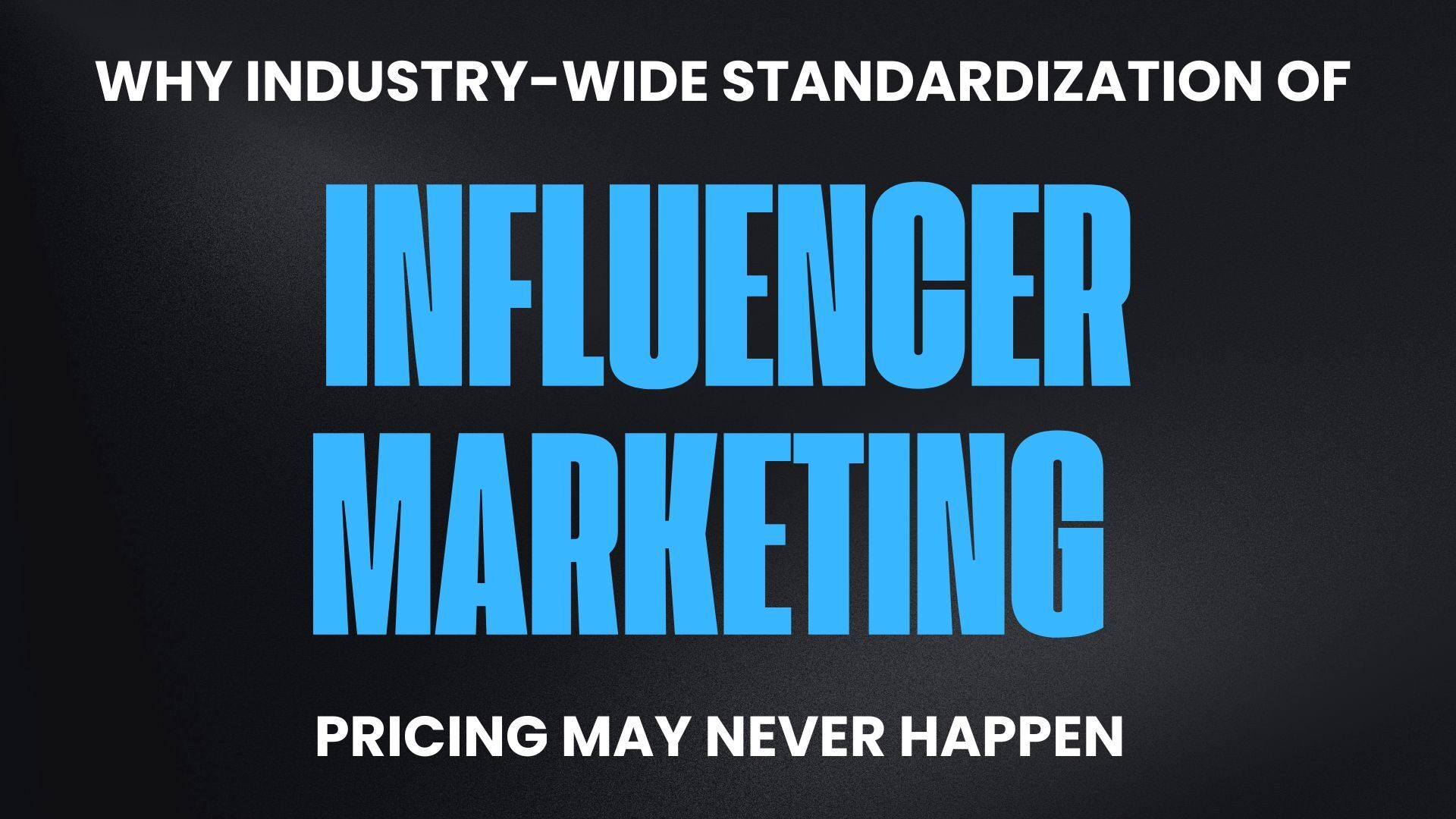The Industry Wants Standardized Pricing for Creator-Brand Collaborations — But Is It Possible?

This edition is exclusive to paid supporters. If you’re already supporting, thank you so much! If you’re enjoying the free content, consider upgrading to get full access to this piece and other exclusive strategies and insights, like an in-depth look at the pros and cons of long-term creator partnerships and a recap of key creator economy trends in the first half of 2025.
I don't say "never" often, but when it comes to standardizing pricing across influencer marketing, it's unlikely to happen, at least not in the way most people imagine.
This topic comes up constantly from creators, talent managers, and marketers alike. Many want a universal framework for creator rates tied to creators, performance, deliverables, and scope, aiming for more transparency and fairness. But the reality is, there are simply too many players, creators, and variables for a one-size-fits-all model to stick.
Here's why industry-level standardization is such a challenge, what it would take to make it work, and a more realistic alternative that could actually benefit everyone involved.
Too Many Players, Too Many Models
There's no singular path for how creator-brand collaborations come together. Some brands work directly with creators. Others use influencer marketing platforms, marketplaces, full-service agencies, hybrid partners, or even freelancers and consultants to fill specific roles.
The people managing these relationships vary widely, from junior social media coordinators to seasoned in-house teams. Their goals, budgets, expertise, and own incentives differ. Some agencies aim to spend as little as possible to protect margins. Some platforms take service fees that significantly reduce what creators actually earn. Some brands have more to spend, while others are hyper-focused on ROI and scrutinize every dollar.
All of this creates major pricing inconsistencies.
For example, when I've partnered with brands, whether as an outdoor creator on Instagram working with LL Bean, Everyman Jack, or Allagash Brewing, or now working with B2B companies on LinkedIn and through this newsletter—I've typically seen higher payments when working directly with brands compared to going through platforms or agencies, even when most factors were the same. And knowing some of the inner workings of those intermediaries, I understand why.
Creators Are Just as Varied
The creator side is just as fragmented. We're talking about a wide spectrum from full-time influencers to part-time side hustlers, spanning every platform, format, niche, and motivation.
Some creators price based on follower count or average views. Others factor in content quality, production time, overall effort, and more.
For some, money is the main driver because it is their full-time job. Those just starting may accept lower pay early on, especially if demand is low or if they believe working with a particular brand could help build their portfolio. And for creators who have a full-time job and treat brand partnerships as a side hustle, compensation from these deals might not be as critical.
That was the case for me when I was working a 9-to-5 while doing brand partnerships on the side. I wanted to get paid fairly, but I viewed those partnerships as supplemental income, so I was more flexible.
Now, as a full-time entrepreneur where brand partnerships are a key revenue driver, it is much more important for me to negotiate and push for my rates since it's part of my business.
When There's a Rep, There's a Premium
More creators today have formal representation—managers, agents, even lawyers—and that's no longer limited to top-tier talent. Naturally, these reps are incentivized to negotiate harder, adding another layer to the pricing process.
Whenever I've run influencer marketing campaigns, creators with representation often had the highest rates. Part of that was because they tended to be larger creators, but another key reason was simple: there was one more person who needed to get paid. Whether it was a manager, agent, or lawyer, that added layer often translated to higher fees, more line items, and more negotiation.
Sometimes, the difference in what two similar creators get paid simply comes down to this: one has someone advocating for them and the other doesn't.
Upgrade to a Paid Membership to Unlock the Rest
Become a paying subscriber to access this post, along with other exclusive content and perks.
UpgradeA subscription gets you:
- Bonus Newsletters & Resources: In-depth, actionable insights on influencer marketing, social media, and content creation. plus deep dives into emerging trends.
- Personalized Q&A: Submit your questions and get tailored, audio-recorded answers—personalized micro-consulting for your biggest challenges.

